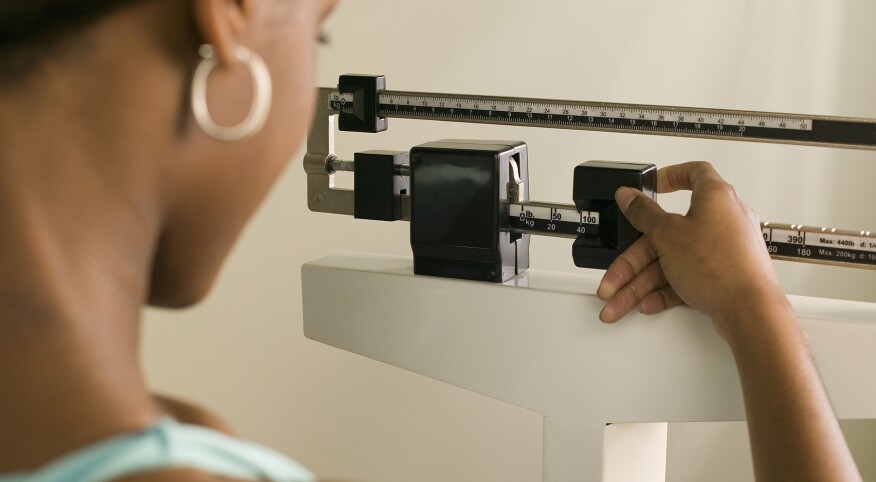Whether you lost weight for an upcoming class reunion or slimmed down under doctor’s orders, it’s possible that you may soon find the pounds creeping back on. Perhaps, for a while, you were doing great — eating healthful, well-balanced meals and exercising regularly. But have you slipped back into the habits that caused you to surpass your happy weight in the first place?
You may think you need a new diet plan, but when it comes to permanently losing pounds, research published in the Journal of the American Medical Association suggests that the kind of weight-loss program you choose doesn’t matter as much as your ability to stick to it.
Perfection isn’t the goal. Consistent effort is. We don’t have to hate ourselves in order to work on the healthier version.
And to adhere to a plan, psychologist Glenn Livingston, Ph.D., notes in Psychology Today, you need the right motivation.
There are two major types of weight-loss motivation: intrinsic and extrinsic, or motivation from within and motivation from outside yourself. Both types of motivation can help you reach your health goals.
Extrinsic motivation can give you the push you need to get started. You dropped inches before your class reunion so you could slip into the chic new dress you bought for the occasion. You started exercising because your aunt called you “pudgy” at a family Sunday dinner. You cut back on fried foods after your doctor said your cholesterol numbers didn’t look so good.
But extrinsic motivation alone often won’t be enough to see lasting results. When people depend too heavily on extrinsic motivation, they may lose weight in the short term, but once the original extrinsic motivation changes or vanishes altogether, they soon find themselves gaining the weight back.
Studies indicate that long-lasting weight loss requires not just a change in diet but a change in identity. That’s why O’Bryant urges her clients to imagine the best version of themselves.
That’s why we need intrinsic motivation. While extrinsic motivation may stem from a desire to please or impress others or an attempt to avoid guilt or shame, intrinsic motivation stems from more positive and meaningful reasons to lose weight. You start exercising regularly and eating nutritious foods not to adhere to some beauty or social standard but because you want more energy to live life to the fullest.
Fitness coach Caprice O’Bryant sees both extrinsic and intrinsic motivators inspiring her clients to reach out to her for help.
“It’s like the circumstances of life are pushing them up against a wall,” O’Bryant says.
Women often come to her when they’ve gotten fed up with how physically uncomfortable they feel at their current weight. But the desire to do something about it often comes from within as clients decide, “I owe it to myself to make these lifestyle changes.”
To tap into your intrinsic motivation, O’Bryant recommends getting clear on your top five intrinsic values.
Perhaps this is the refrain that can keep you motivated. Or maybe you can try reciting affirmations such as “I believe in myself, my capabilities and my dreams.” Stay focused on how having a healthy body will make it easier for you to go after your other life goals.
One of the first things O’Bryant tells the women she works with is to ditch diet culture. Instead of focusing on restrictions and asking them to throw out everything in their pantry and fridge, O’Bryant wants her clients to focus on slowly adding healthy habits such as drinking more water, getting more sleep, moving their bodies and eating more fruits and vegetables.
To tap into your intrinsic motivation, O’Bryant recommends getting clear on your top five intrinsic values.
“These intrinsic values start to dictate our decisions,” she says.
Your values might include family, faith and creativity. These values help you connect with your why. You may, for example, want to be physically fit because you value your family and you want to be able to play in the backyard with your grandchildren.
Your values might include family, faith and creativity. These values help you connect with your why. You may, for example, want to be physically fit because you value your family and you want to be able to play in the backyard with your grandchildren.
It’s also a good idea to periodically revisit your values and your why statements.
“Many times, as we grow through life, our priorities shift,” O’Bryant says.
Studies indicate that long-lasting weight loss requires not just a change in diet but a change in identity. That’s why O’Bryant urges her clients to imagine the best version of themselves.
“What type of activities does she do in order to become this person?” she asks her clients to consider.
The idea of becoming a new person may seem daunting, but O’Bryant reminds her clients to give themselves grace on this journey.
“Perfection isn’t the goal,” she says. “Consistent effort is. We don’t have to hate ourselves in order to work on the healthier version.”
Create a vision board that represents this healthier version of yourself. O’Bryant also recommends journaling.
“It allows us to get to the root of what’s in our mind,” she says. “Our thoughts create our behaviors.”
Editor’s note: Break the yo-yo cycle!
“What happens when we yo-yo diet is that we lose weight, but a lot of that weight is muscle,” says Stephen Perrine, author of the New York Times bestseller The Whole Body Reset, from AARP. “We need to stop trying to restrict our food intake and instead focus on making sure we’re getting the nutrients we need. That means plenty of protein, especially at breakfast, and lots of fruits and vegetables throughout the day. Combined with regular exercise, that’s the best way to hold on to muscle as we get older and fend off fat.”
What happens when we yo-yo diet is that we lose weight, but a lot of that weight is muscle.
The Whole Body Reset, from AARP, shows you how to stop and reverse age-related weight gain and muscle loss — at midlife and beyond. Perrine’s tips:
- For every excuse you give yourself for not exercising or making healthy choices, come up with a response reframing the decision. For example, counter “I have to eat convenience food because it’s all my kids will eat” with “I can eat something different from what my kids eat, and they’ll see that there are healthier alternatives.”
- The best way to ensure you have a healthy, protein-rich breakfast is to figure out your breakfast the night before. Strive to get at least 25 grams of protein to start your day, from eggs, dairy and/or whole grains.











